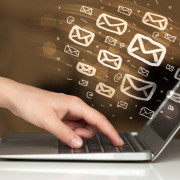Practical rules and resources for writing quality emails
This might be difficult to imagine if you are under 35, but when I started my career in finance there was no email. All written communication was by letter, and if something was really urgent you might send a telex or a fax. Written communication was an investment – an investment in time and in labour. The process of sending a letter was a slow one; dictating it, the secretary/typist typing it, checking it, finally signing it, putting it in an envelope and posting it. There was no word processing software – if you wanted to make changes to the content, you returned it to the typist who would retype it. Again, this may be difficult to imagine, but in some ways this wasn’t such a bad thing and there was a plus side to the writer and the reader. Exactly because it was so time consuming and labour intensive, you thought carefully about what you wanted to say and how you were going to say it. You invested in the quality of your written communication.
Today email communication, combined with documents being available online, has replaced the letter. Email beats snail mail letters. Approximately 280 billion emails are sent every day, and the average number of business emails sent each day is around 125 billion. In a recent workshop on Managing conflict in virtual teams one purchaser shared he had received 68 from a single person in one day!
Writing emails requires little effort and little thought– and obviously this is not always a good thing. Take a look at your inbox and ask yourself how many of these emails are unclear, unnecessary or simply unwanted. So why do we send so many? The simple answer is because we can. The process is simple, quick and easy. The challenge organizations face today is keeping the good stuff (quick, easy, simple) while eliminating the down sides. This is made harder by our convictions that our writing is clear and understandable despite research showing we often overestimate this.
So if you want your mails to be clear, necessary and wanted then start with these 3 practical rules.
Write clear and understandable subject lines
It’s very likely that your reader is busy and that they have a lot of pulls on their time. Regardless of whether they are using a laptop, tablet or phone they will see your name/email address and your subject line. A clear and understandable subject line helps them prioritize your email, shows respect for their time, and builds trust. A clear subject line can also help catch your recipient’s attention and encourage them to deal with your mail quickly. Consider using BLUF (bottom line up front) in your subject line and also at the very start of your email. Another simple tip that many virtual teams adopt is to agree with your team members on a selection of limited key words (e.g Info, Action, Decision). For more simple and practical advice plus a training activity on effective subject lines check out this post.

Write it how you’d say it
Many of us (and I am guilty of this) use a different style when writing. Some people opt for different words, more complicated expressions and generally take longer to say something in writing than we would face to face.
For example…. “It has been brought to my attention that the complexities of the user interface are making life difficult for some of our users. I’d like to suggest we discuss this together”. Flipping it around some people also write emails in note form, or an overly casual style e.g. “Heard user interface difficult 4 user. Talk?” Writing as you speak would give you “Some of our users are finding the user interface difficult to use. Can we talk about this together?”
Writing in a clear and direct style definitely helps clarity. Pay attention to tone, and as a reader try to give the writer the benefit of the doubt when you feel the tone is odd.
Take a moment before you hit send
In the days when we sent letters we took a lot of time to think about what we were writing. We planned and drafted and there were many opportunities to change what we wanted to say or how we wanted to say it. You could read your letter through before signing it and at that moment decide if you really wanted to send it.

Today these inbuilt pauses don’t exist. You quickly read a mail, write the response and hit send. It is often done on the move and squeezed between other tasks, conversations etc. That is generally OK for short, routine communications but for those that are longer, complicated or sensitive, type once but look twice is a good rule to follow. Write your email, don’t add the address and put it in your drafts folder (or email it to yourself). Read it later and if it’s clear, understandable and unemotional – send it. For more help on writing emotionally neutral emails, see here.










